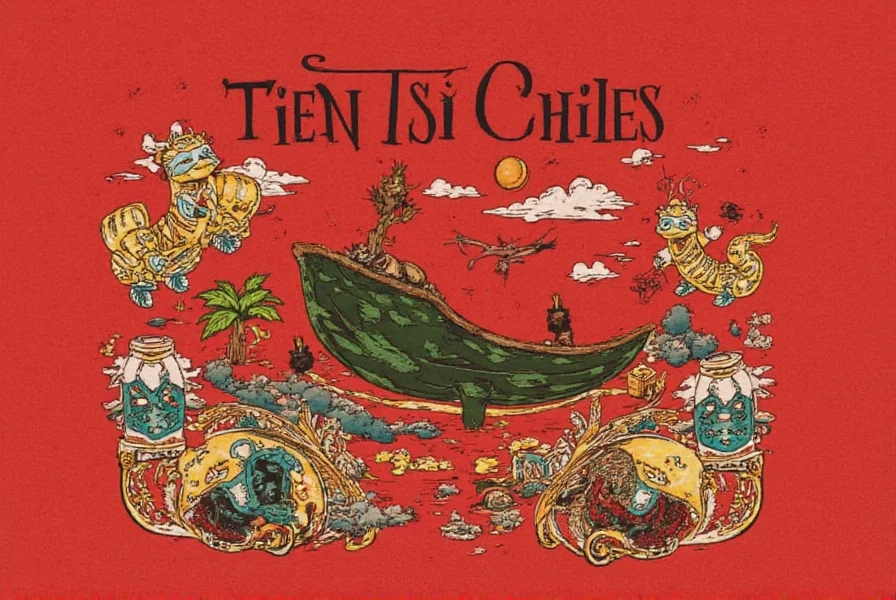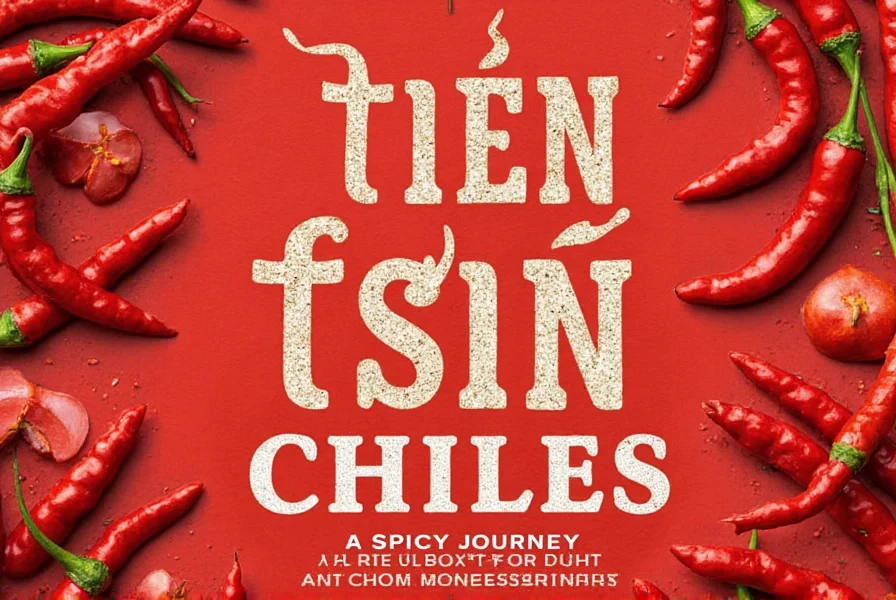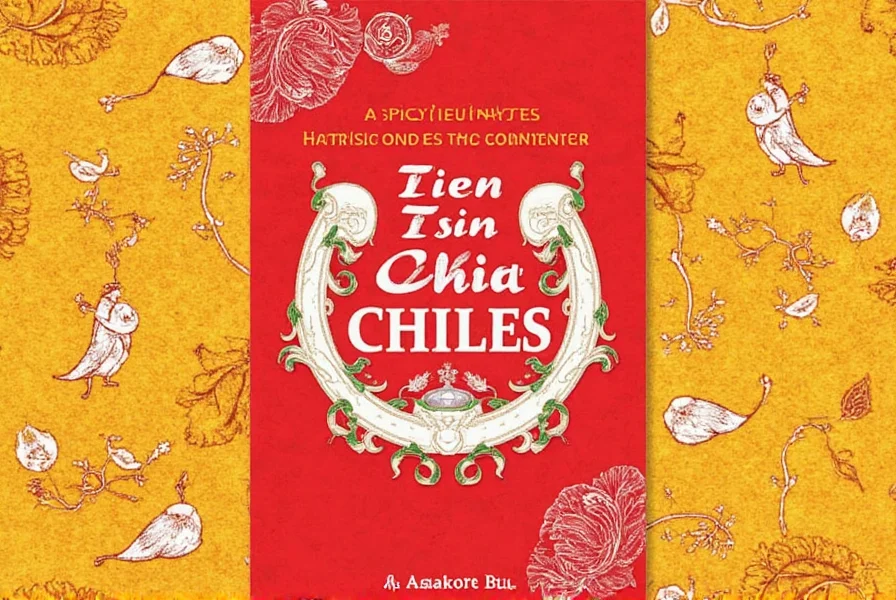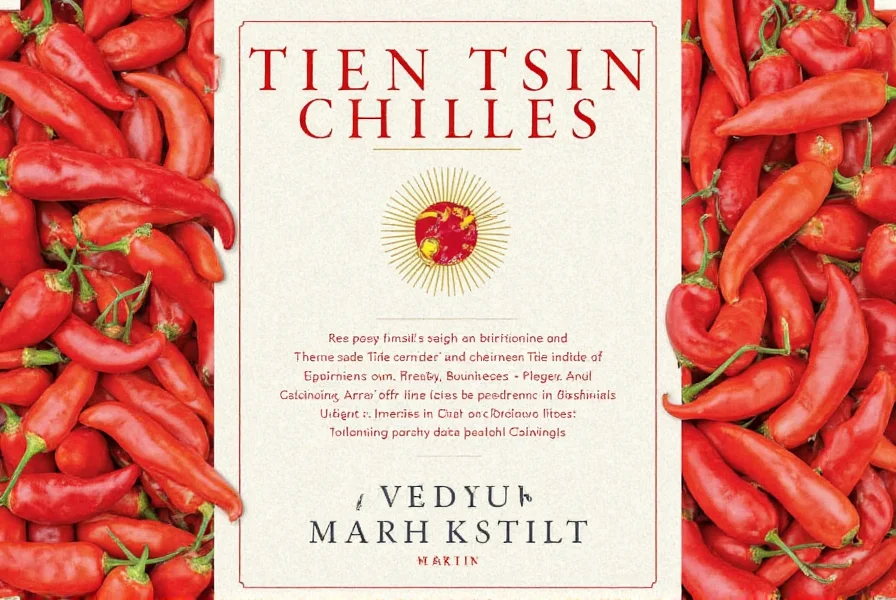Table of Contents
What Are Tien Tsin Chiles?
Tien Tsin chiles (also known as Chinese red chili peppers) are small dried chili peppers native to China, commonly used in Sichuan cuisine for their moderate heat (50,000-70,000 Scoville units) and smoky-sweet flavor profile. They are a staple in Asian cooking, adding depth to stir-fries, sauces, and braised dishes without overwhelming other ingredients.

Frequently Asked Questions About Tien Tsin Chiles
What are Tien Tsin chiles exactly?
Tien Tsin chiles, also known as Chinese red chili peppers, are small dried peppers native to China. They're typically used in both traditional and modern cooking to add a fiery kick with a subtle sweetness that balances the heat. These chilies measure between 50,000-70,000 Scoville units, making them moderately hot.
How do Tien Tsin chiles differ from other dried red chilies?
Unlike many other dried red chilies that are either purely hot or extremely sweet, Tien Tsin chiles offer a unique balance of moderate heat (50,000-70,000 Scoville units) with a subtle sweetness and smoky, slightly fruity aroma. They're hotter than jalapeños or serranos but milder than habaneros, making them versatile for various dishes without overwhelming other flavors.
Can I use fresh Tien Tsin chiles instead of dried ones?
Tien Tsin chiles are almost always used in their dried form. While you can find fresh versions, the traditional culinary use involves dried chilies which develop a more complex, smoky-sweet flavor profile. If using dried chilies, you can rehydrate them by soaking in warm water for 15-20 minutes before using in recipes that call for fresh.
How should I store Tien Tsin chiles to maintain freshness?
Store dried Tien Tsin chiles in an airtight container in a cool, dark place away from moisture and direct sunlight. Properly stored, they can maintain their flavor and potency for up to a year. For longer storage (up to 2 years), keep them in the refrigerator or freezer in a sealed container to preserve their oils and prevent them from becoming brittle.
Are Tien Tsin chiles the same as Thai chilies?
No, Tien Tsin chiles are not the same as Thai chilies (also called bird's eye chilies). While both are small and spicy, Tien Tsin chiles have a more moderate heat level (50,000-70,000 Scoville units) compared to Thai chilies which range from 50,000-100,000 Scoville units. Tien Tsin chiles also have a distinctive smoky-sweet flavor profile, whereas Thai chilies are known for their bright, citrusy heat.
What dishes work best with Tien Tsin chiles?
Tien Tsin chiles work exceptionally well in stir-fries, hot sauces, chili oils, and braised dishes. Their balanced heat and subtle sweetness make them perfect for Kung Pao chicken, mapo tofu, and other Szechuan dishes. They also complement umami-rich ingredients like soy sauce, garlic, and ginger, and can even be used to add complexity to chocolate desserts or fruit-based sauces.
The Flavor Profile of Tien Tsin Chiles
Tien Tsin chiles deliver a complex flavor profile that balances moderate heat with subtle sweetness and smoky notes. Their heat level (50,000-70,000 Scoville units) is significantly higher than jalapeños but milder than habaneros, making them ideal for adding depth without overpowering dishes.
| Pepper | Scoville Units | Heat Level |
|---|---|---|
| Tien Tsin Chiles | 50,000 - 70,000 | Moderate |
| Jalapeño | 2,500 - 8,000 | Mild |
| Serrano | 10,000 - 25,000 | Mild to Medium |
| Habanero | 100,000 - 350,000 | Very Hot |
Essential Cooking Tips with Tien Tsin Chiles
Maximize the flavor of Tien Tsin chiles with these expert techniques:
- Use them whole or ground: Add whole dried chiles to soups or stews for gradual heat release, or grind into powder for seasoning blends.
- Toast before grinding: Dry-toast chiles in a pan for 1-2 minutes to enhance their smoky aroma before grinding.
- Pair with umami-rich ingredients: Combine with soy sauce, garlic, ginger, or fermented products like miso for balanced flavor profiles.
- Balance with sweetness: Counteract heat with honey, brown sugar, or fruits like mango or pineapple in sauces.
- Infuse oils: Create chili oil by simmering chiles in neutral oil for 10 minutes, then strain for versatile flavoring.

Buying Guide: How to Choose the Best Tien Tsin Chiles
Follow these criteria when purchasing Tien Tsin chiles:
Key Quality Indicators:
- Color: Bright red with no brown spots or discoloration
- Texture: Firm and pliable (not brittle or crumbly)
- Aroma: Strong earthy scent with subtle fruity notes
- Origin: Prefer Chinese-grown chiles from reputable spice suppliers
Recommended Products:
- Organic Tien Tsin Chiles (1 lb)
- Features: Organic, non-GMO, air-dried
- Best For: Homemade chili powders, sauces, and marinades
- Ground Tien Tsin Chili Powder (4 oz)
- Features: Fine grind, ready-to-use
- Best For: Quick seasoning of meats, vegetables, and dips

Substitute Options for Tien Tsin Chiles
When Tien Tsin chiles are unavailable, these alternatives work well:
- Dried Serrano Chiles: Similar heat level (10,000-25,000 Scoville) with brighter acidity; ideal for salsas and sauces
- Cayenne Pepper: Hotter (30,000-50,000 Scoville); use 50% less quantity for equivalent heat
- Thai Bird's Eye Chilies: Slightly hotter (50,000-100,000 Scoville) with citrusy notes; perfect for Thai dishes
- Smoked Paprika: Mild alternative (0 Scoville) for smoky flavor without heat; use in equal amounts

Conclusion
Tien Tsin chiles offer a unique combination of moderate heat, smoky sweetness, and versatility that elevates both traditional Asian dishes and modern fusion recipes. Their balanced flavor profile makes them an essential ingredient for home cooks seeking restaurant-quality results without overwhelming heat. Always start with small quantities and adjust to taste for optimal flavor integration.












 浙公网安备
33010002000092号
浙公网安备
33010002000092号 浙B2-20120091-4
浙B2-20120091-4